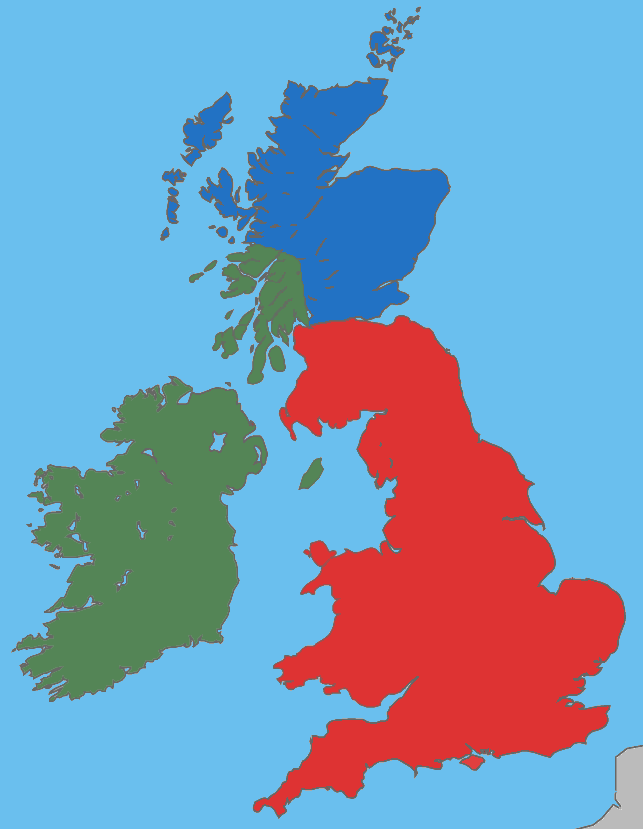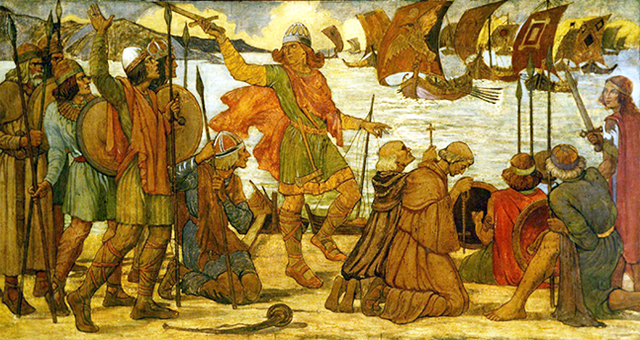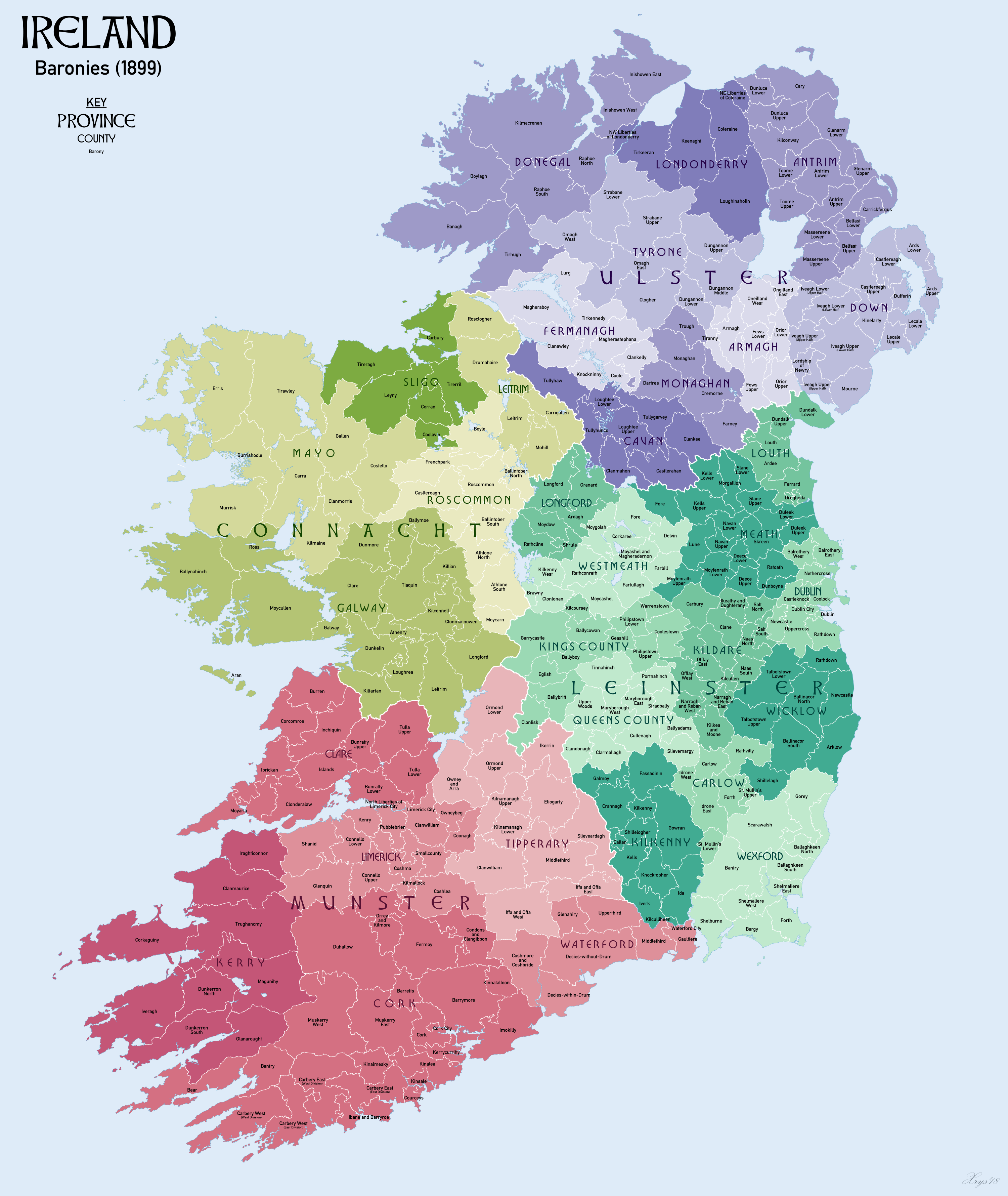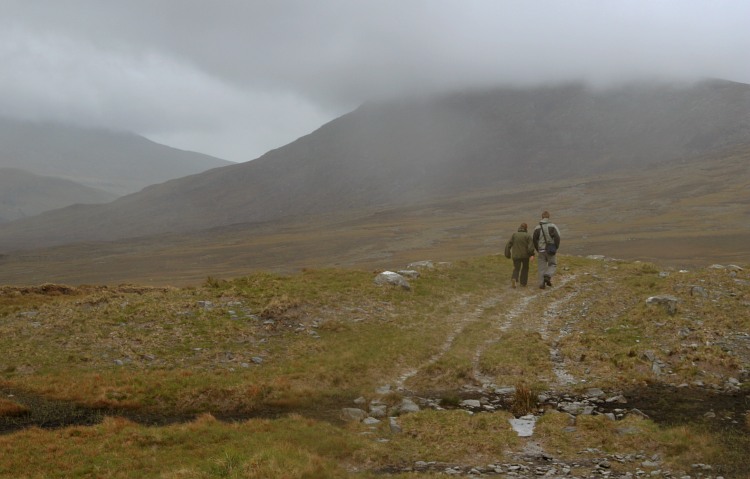|
Fir Domnann
The Fir Domnann were a people named in Irish legendary history. The name ''Fir Domnann'' is based on the root ''dumno''-, which means both 'deep' and 'the world'. The suffix -''on''- often occurs in Gaulish and British divine names. The tribal name Dumnonii, found in Britain, would therefore mean 'people of the god of the world'. Old Irish ''fir'' means 'men', and so ''Fir Domnann'' had the same meaning as the British tribal name, leading to conjecture that these tribes had a common origin. For example, O'Rahilly's historical model proposed that the Domnann were a P-Celtic, pre-Goidelic people who, along with the Galeóin, invaded the south-east coast of Ireland from Britain. O'Rahilly's theory of P-Celtic preceding Goidelic in Ireland is not widely accepted by experts today, but the idea of some connection between the British and Irish tribes of similar names remains. In early Irish literature, the Fir Domnann were located in ''Cóice Laigean'' ( Leinster). A probably 7th-ce ... [...More Info...] [...Related Items...] OR: [Wikipedia] [Google] [Baidu] |
Ireland
Ireland (, ; ; Ulster Scots dialect, Ulster-Scots: ) is an island in the North Atlantic Ocean, in Northwestern Europe. Geopolitically, the island is divided between the Republic of Ireland (officially Names of the Irish state, named Irelanda sovereign state covering five-sixths of the island) and Northern Ireland (part of the United Kingdomcovering the remaining sixth). It is separated from Great Britain to its east by the North Channel (Great Britain and Ireland), North Channel, the Irish Sea, and St George's Channel. Ireland is the List of islands of the British Isles, second-largest island of the British Isles, the List of European islands by area, third-largest in Europe, and the List of islands by area, twentieth-largest in the world. As of 2022, the Irish population analysis, population of the entire island is just over 7 million, with 5.1 million in the Republic of Ireland and 1.9 million in Northern Ireland, ranking it the List of European islands by population, ... [...More Info...] [...Related Items...] OR: [Wikipedia] [Google] [Baidu] |
Dumnonii
The Dumnonii or Dumnones were a Britons (historical), British List of ancient Celtic peoples and tribes, tribe who inhabited Dumnonia, the area now known as Cornwall and Devon (and some areas of present-day Dorset and Somerset) in the further parts of the West Country, South West peninsula of Britain, from at least the British Iron Age, Iron Age up to the early Saxons, Saxon period. They were bordered to the east by the Durotriges tribe. Etymology William Camden, in his 1607 edition of ''Britannia'', describes Cornwall and Devon as being two parts of the same 'country' which: Camden had learnt some Welsh language, Welsh during the course of his studies and it would appear that he is the origin of the interpretation of Dumnonii as "deep valley dwellers" from his understanding of the Welsh of his time. The modern Welsh term is ''Dyfnaint''. John Rhŷs later theorized that the tribal name was derived from the name of a goddess, ''Domnu'', probably meaning "the goddess of the deep". ... [...More Info...] [...Related Items...] OR: [Wikipedia] [Google] [Baidu] |
P-Celtic
The Gallo-Brittonic languages, also known as the P-Celtic languages, are a proposed subdivision of the Celtic languages containing the languages of Ancient Gaul (both ''Gallia Celtica, Celtica'' and ''Belgica'') and Celtic Britain, which share certain features. Besides common shared innovation, linguistic innovations, speakers of these languages shared cultural features and history. The cultural aspects are commonality of art styles and worship of similar gods. Celtic coins, Coinage just prior to the Roman Britain, British Roman Period was also similar. In Julius Caesar's time, the Atrebates held land on both sides of the English Channel. It contrasts with the Insular Celtic hypothesis, which asserts that Goidelic and Brittonic languages, Brythonic underwent a period of common development and have shared innovations to the exclusion of Gaulish, while the shared changes are either independent innovations that occurred separately in Brythonic and Gaulish or are due to language con ... [...More Info...] [...Related Items...] OR: [Wikipedia] [Google] [Baidu] |
Goidelic
The Goidelic ( ) or Gaelic languages (; ; ) form one of the two groups of Insular Celtic languages, the other being the Brittonic languages. Goidelic languages historically formed a dialect continuum stretching from Ireland through the Isle of Man to Scotland. There are three modern Goidelic languages: Irish ('), Scottish Gaelic ('), and Manx ('). Manx died out as a first language in the 20th century but has since been revived to some degree. Nomenclature ''Gaelic'', by itself, is sometimes used to refer to Scottish Gaelic, especially in Scotland, and therefore is ambiguous. Irish and Manx are sometimes referred to as Irish Gaelic and Manx Gaelic (as they are Goidelic or Gaelic languages), but the use of the word ''Gaelic'' is unnecessary because the terms Irish and Manx, when used to denote languages, always refer to those languages. This is in contrast to Scottish Gaelic, for which "Gaelic" distinguishes the language from the Germanic language known as Scots. In Englis ... [...More Info...] [...Related Items...] OR: [Wikipedia] [Google] [Baidu] |
Leinster
Leinster ( ; or ) is one of the four provinces of Ireland, in the southeast of Ireland. The modern province comprises the ancient Kingdoms of Meath, Leinster and Osraige, which existed during Gaelic Ireland. Following the 12th-century Norman invasion of Ireland, the historic "fifths" of Leinster and Meath gradually merged, mainly due to the impact of the Pale, which straddled both, thereby forming the present-day province of Leinster. The ancient kingdoms were shired into a number of counties for administrative and judicial purposes. In later centuries, local government legislation has prompted further sub-division of the historic counties. Leinster has no official function for local-government purposes. However, it is an officially recognised subdivision of Ireland and is listed on ISO 3166-2 as one of the four provinces of Ireland. "IE-L" is attributed to Leinster as its ''country sub-division'' code. Leinster had a population of 2,858,501 according to the prelim ... [...More Info...] [...Related Items...] OR: [Wikipedia] [Google] [Baidu] |
Dún Áilinne
A dun is an ancient or medieval fort. In Great Britain and Ireland it is mainly a kind of hillfort and also a kind of Atlantic roundhouse. Etymology The term comes from Irish ''dún'' or Scottish Gaelic ''dùn'' (meaning "fort"), and is cognate with Old Welsh ''din'' (whence Welsh ''dinas'' "city" comes). In certain instances, place-names containing ''Dun-'' or similar in Northern England and Southern Scotland, may be derived from a Brittonic cognate of the Welsh form ''din''. In this region, substitution of the Brittonic form by the Gaelic equivalent may have been widespread in toponyms. The Dacian dava (hill fort) is probably etymologically cognate. Details In some areas duns were built on any suitable crag or hillock, particularly south of the Firth of Clyde and the Firth of Forth. There are many duns on the west coast of Ireland and they feature in Irish mythology. For example, the tale of the ''Táin Bó Flidhais'' features Dún Chiortáin and Dún Chaocháin ... [...More Info...] [...Related Items...] OR: [Wikipedia] [Google] [Baidu] |
Malahide
Malahide ( ; ) is an affluent coastal settlement in Fingal, County Dublin, Republic of Ireland, Ireland, situated north of Dublin city. It has a village centre surrounded by suburban housing estates, with a population of 18,608 as per the 2022 census. Malahide Castle dates from the 12th century and is surrounded by a large park, part of which incorporates an international cricket ground. The area also features a sandy beach, a marina, a parkrun and a variety of sporting clubs. Etymology The modern name Malahide comes from "Mullach Íde", possibly meaning "the hill of Íde" or "Íde's sand-hill"; it could also mean "Sand-hills of the Hydes" (from Mullac h-Íde), in turn probably referring to a Normans, Norman family from the Donabate area. According to the Placenames Database of Ireland the name Malahide is possibly derived from the Irish "Baile Átha Thíd" meaning "the town of the ford of Thíd", which may have been a ford at the mouth of the Gaybrook Stream, on the road to S ... [...More Info...] [...Related Items...] OR: [Wikipedia] [Google] [Baidu] |
County Dublin
County Dublin ( or ) is a Counties of Ireland, county in Republic of Ireland, Ireland, and holds its capital city, Dublin. It is located on the island's east coast, within the Provinces of Ireland, province of Leinster. Until 1994, County Dublin (excluding the city) was a single Local government in the Republic of Ireland, local government area; in that year, the county council was divided into three new administrative counties: Dún Laoghaire–Rathdown, Fingal and South Dublin. The three administrative counties together with Dublin City proper form a NUTS III NUTS statistical regions of Ireland, statistical region of Ireland (coded IE061). County Dublin remains a single administrative unit for the purposes of the courts (including the Dublin County Sheriff, but excluding the bailiwick of the Dublin City Sheriff) and Dublin County combined with Dublin City forms the Judicial County of Dublin, including Dublin Circuit Court, the Dublin County Registrar and the Dublin Metropolitan ... [...More Info...] [...Related Items...] OR: [Wikipedia] [Google] [Baidu] |
Barony (Ireland)
In Ireland, a barony (, plural ) is a historical subdivision of a counties of Ireland, county, analogous to the hundred (county subdivision), hundreds into which the counties of England were divided. Baronies were created during the Tudor reconquest of Ireland, replacing the earlier cantreds formed after the original Norman invasion of Ireland, Norman invasion.Mac Cotter 2005, pp.327–330 Some early baronies were later subdivided into half baronies with the same standing as full baronies. Baronies were mainly cadastre, cadastral rather than administrative units. They acquired modest local taxation and spending functions in the 19th century before being superseded by the Local Government (Ireland) Act 1898. Subsequent adjustments of county boundaries mean that some baronies now straddle two counties. The final catalogue of baronies numbered 331, with an average area of ; each county was divided, on average, into 10 or 11 baronies. Creation The island of Ireland was "shired" i ... [...More Info...] [...Related Items...] OR: [Wikipedia] [Google] [Baidu] |
Erris
Erris is a barony in northwestern County Mayo in Ireland consisting of over , much of which is mountainous blanket bog. It has extensive sea coasts along its west and north boundaries. The main towns are Belmullet and Bangor Erris. The name Erris derives from the Irish 'Iar Ros' meaning 'western promontory'. The full name is the Iorrais Domnann, after the Fir Bolg tribe, the Fir Domnann. To its north is the wild Atlantic Ocean and the bays of Broadhaven and Sruth Fada Conn and to its west is Blacksod Bay. Its main promontories are the Doohoma Peninsula, Mullet Peninsula, Erris Head, the Dún Chiortáin and Dún Chaocháin peninsulas and Benwee Head. There are five Catholic parishes in Erris: Kilcommon, Kilmore, Kiltane, Belmullet and Ballycroy. Gaeltacht Parts of Erris are in a Gaeltacht area, with first-language speakers of Irish in the following areas of the barony: An Fál Mór, Tamhaiin na hUltaí, Glais, Eachléim, Tearmann, Tránn, An Mullach Rua, Car ... [...More Info...] [...Related Items...] OR: [Wikipedia] [Google] [Baidu] |
Historical Celtic Peoples
History is the systematic study of the past, focusing primarily on the human past. As an academic discipline, it analyses and interprets evidence to construct narratives about what happened and explain why it happened. Some theorists categorize history as a social science, while others see it as part of the humanities or consider it a hybrid discipline. Similar debates surround the purpose of history—for example, whether its main aim is theoretical, to uncover the truth, or practical, to learn lessons from the past. In a more general sense, the term ''history'' refers not to an academic field but to the past itself, times in the past, or to individual texts about the past. Historical research relies on primary and secondary sources to reconstruct past events and validate interpretations. Source criticism is used to evaluate these sources, assessing their authenticity, content, and reliability. Historians strive to integrate the perspectives of several sources to devel ... [...More Info...] [...Related Items...] OR: [Wikipedia] [Google] [Baidu] |






